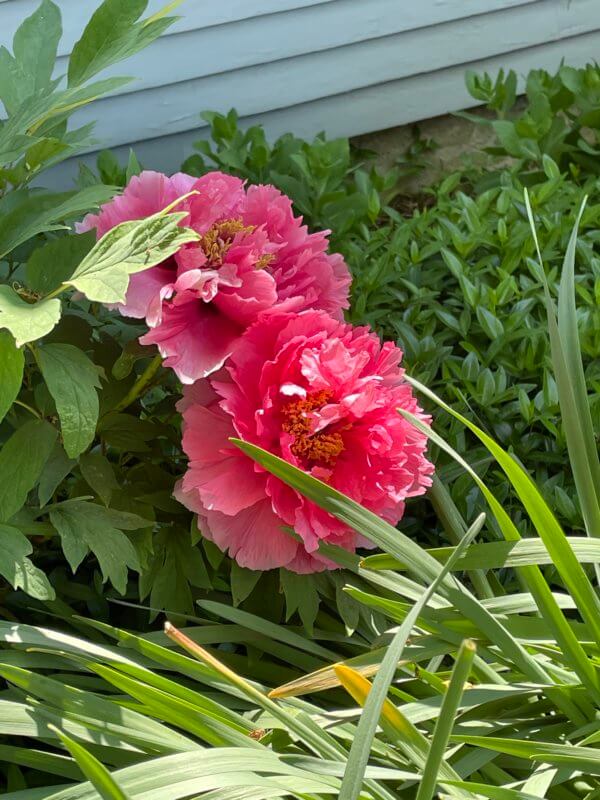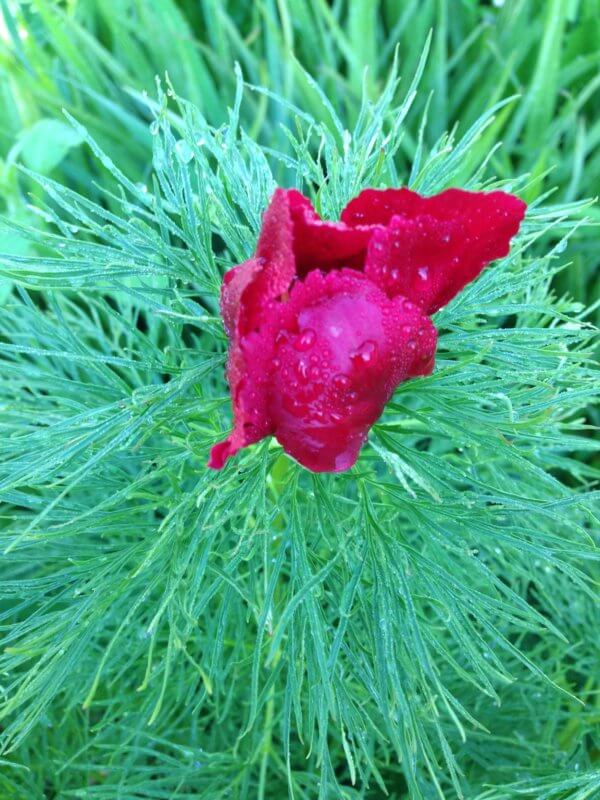The beautiful peonies
[vc_row][vc_column][vc_column_text]
Seems in Vermont it’s almost a requirement to have a display of peonies on the homestead. Most commonly the choice is the old-fashioned herbaceous variety. We anxiously await the bright red nubs that poke from the cold soil each spring. They are just about to bloom in our town.

These days there are more choices available for the garden. Peonies originate in Asia and are beloved in Japan and China particularly. The best are bred there. As well as herbaceous, there are tree peonies and intersectionals. Tree peonies produce on hard wood stems; herbacious peonies come up each spring on new stems. The intersectional, also known as Itoh peonies, produce blooms on new stems every spring and are a marriage of the two mentioned varieties. Itoh is the name of the man who bred the first intersectionals. The advantage of Itohs is fresh, new, shiny foliage each spring and sturdy stems that don’t need supports. The blooms are huge and fragrant. My first and favorite so far is an Itoh called Bartzella. It is yellow, a rare color for a peony. There are others in coral, bright red, blended colors, and white. Itohs bloom slightly later than herbaceous.

Tree peonies are awkward shrubs but worth the effort for their lovely tissue-petaled blooms that come just a few weeks ahead of herbaceous varieties. They only need pruning to remove old stems and any dead wood. Mine have never gotten very large but produce well each year.
There is one other kind of peony that blooms earliest and looks quite different. It’s called the fern-leafed peony and has very fine lacy foliage. The blossoms are bright red. These live for years and don’t increase much by my experience.
Among my favorite herbaceous plants are Sorbet, with its rim of soft pink petals and puff of white with yellow stamens. Festiva Maxima is pure white with tiny streaks of red on some petals as if a paint brush had been flicked on the bloom. Sarah Bernhardt is a beloved pink puff of petals. A white with central mound of gold stamens is called Gold Rush. All of these benefit from a support ring placed early in the season so as not to pierce the roots. These don’t like to be planted too deeply or they will not bloom. Fall is optimal time for establishing new plantings or transplanting older specimens. Peonies require very little care if they like where they are planted and can live for decades. Full sun is an advantage, but partial shade works too.
If you’d like to start a planting of peonies, look for arrivals of bare root plants in late summer or buy potted and perhaps blooming peonies right now at local nurseries.[/vc_column_text][/vc_column][/vc_row]
